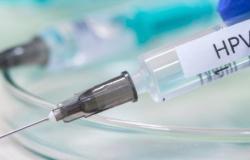Serge McGraw
Credit: Faculty of Medicine, University of Montreal
A new study led by Serge McGraw, researcher at CHU Sainte-Justine and professor in the Department of Obstetrics and Gynecology at the University of Montreal, demonstrates that the effects of exposure to alcohol in an embryo, before its implantation into the uterus, can be detected in the placenta at the end of gestation.
Using a well-established mouse model for this type of exposure, the researcher and his team observed significant molecular changes in the placenta, notably in the expression of numerous genes and in DNA methylation, an epigenetic mark that influences gene expression by acting as a switch.
Since the placenta plays a central role in the development and health of the fetus, these changes could have important consequences on the outcome of the child. Furthermore, the study shows that these alterations in DNA methylation could constitute a molecular signature characteristic of an individual’s exposure to alcohol at the very beginning of pregnancy. This proof of concept paves the way for the development of diagnostic tests in humans, which would allow early detection of alcohol exposure from the first days of life of newborns.
Consequences differentiated by sex
It has long been perceived that exposure to alcohol during the preimplantation phase – when the fertilized egg passes from a unicellular state to an embryo of around a hundred cells – had no effect on the baby at be born, provided that the embryo successfully implants in the uterus.
However, over the past few years, Serge McGraw’s team has demonstrated that this belief is false. The young embryo may survive this exposure, but brain development may be impaired to varying degrees. The study published today reveals for the first time that these harmful effects of alcohol on the developing fetus are not directly attributable to abnormalities of the placenta. However, molecular changes, particularly in gene expression due to changes in DNA methylation profiles, could play an important role in these deleterious effects.
However, the epigenetic influence of alcohol exposure varies by sex. In male embryos, the regulation of growth-related genes was more affected, supporting evidence that males are more vulnerable to growth retardation following preimplantation alcohol exposure. In females, it was mainly the regulation of genes active in the metabolism of serotonin – a neurotransmitter essential for the development and function of the brain – which was affected. This indicates that a disruption in this signaling pathway could contribute to the brain morphological defects observed in their model.
Repercussions linked to the quantity of alcohol consumed
It should be noted that this study focuses on high alcohol consumption, the human equivalent of five or six drinks in one hour. This model is particularly relevant given that a significant proportion of pregnancies are unplanned and in a global context where alcohol consumption among women is increasing, according to the World Health Organization.
“Our model seeks to reproduce and understand the effects of a situation where a woman approximately a week pregnant – therefore carrying an embryo of a few cells – would consume a large quantity of alcohol quickly, at a party or in a bar for example. example, without necessarily knowing that she is pregnant,” explains Serge McGraw.
Towards early detection?
Although validation in humans remains to be carried out, the research team considers that DNA methylation profiles could constitute a good indicator of the exposure, from birth, of a baby to alcohol during gestation.
“Currently, no molecular diagnostic test exists to detect prenatal exposure to alcohol,” mentions Serge McGraw. Thus, unless there is a very serious problem in the child, difficulties are often noticed only after starting school or even during adolescence. Young people may, for example, have difficulty concentrating or a behavioral disorder, which complicates their school career.”
The development of a screening test based on this molecular memory of exposure, present in the placenta, would make it possible to ensure appropriate medical monitoring from an early age.






